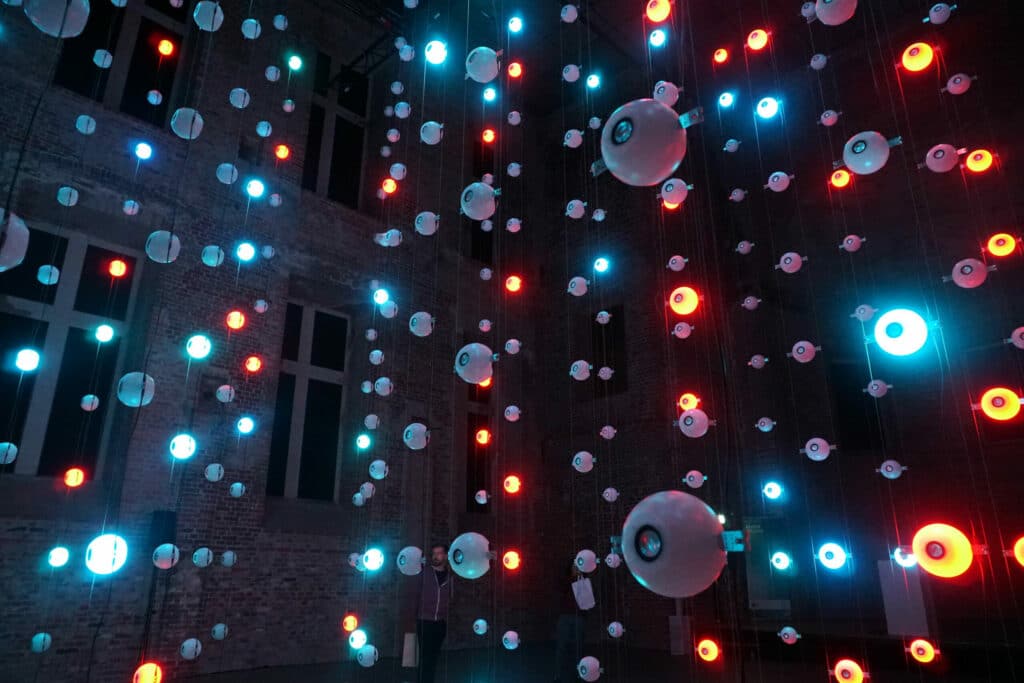The light and sound sculpture AIS³ [aiskju:b] by Tim Otto Roth—444 illuminated speakers that make the processes of the “weirdest telescope in the world” tangible on a small scale—shows how the meeting of art and science can be both sensory and enriching for our perception. The IceCube Neutrino Observatory measures minimal movements of light in the total darkness of the Antarctic ice that are evidence of the existence of “ghost particles”—weakly interacting neutrinos. [aiskju:b] nables these particles, billions of which pass through the human body each second, to be sensorially experienced. However, [aiskju:b] is much more than just a different presentation of scientific findings, it is a new interdisciplinary art practice: [aiskju:b] is simultaneously a work of art and a basic psychoacoustic experiment. It turns the space itself into a sound generator in which visitors can move freely and immerse themselves in the emerging sound space.
Over the past year, the conceptual artist and composer Tim Otto Roth and a project team from the RWTH led by Professor Christopher Wiebusch built the light and sound installation [aiskju:b] at the RWTH. After spectacular presentations in Berlin and Munich, AIS³ [aiskju:b] can now be experienced in Aachen for the first time.
AIS³ [aiskju:b] was realized in cooperation with the III. Physikalisches Institut B of RWTH Aachen University.
Accompanying the exhibition is the thematic presentation of the collection Observing Nature, which will explore nature as a subject matter in art from 1960 to the present.
Idea: Andreas Beitin
Curated by Christian Haring
The realization of the installation was made possible by the generous support of the following partners:

